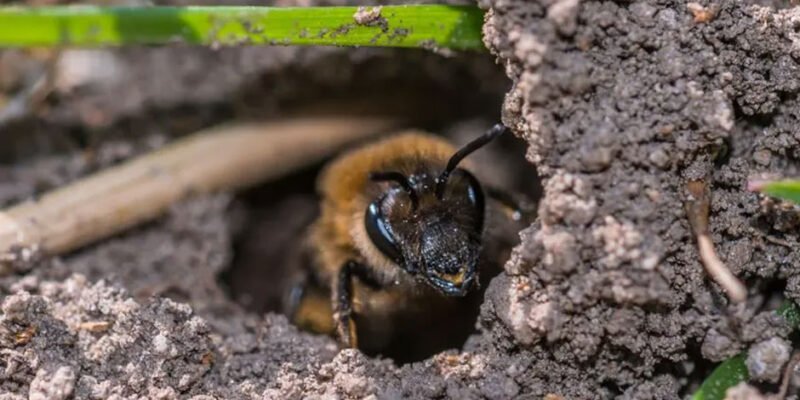Introduction
As spring brings forth new beginnings, it also marks the emergence of ground-nesting bees from their burrows. While these bees are essential pollinators, contributing significantly to the local ecosystem, they can sometimes cause inconvenience to homeowners by digging holes in yards. In this guide, we will explore the world of ground bees, understand their role in the environment, and discover ways to manage their presence without causing harm to these valuable insects.
Understanding Ground Bees
Ground bees, as the name suggests, are bees that construct their nests underground. Unlike honey bees, many ground-nesting bee species are solitary and lack stingers. Male ground bees may exhibit aggressive behavior, but they are unable to inflict harm. Female ground bees, on the other hand, have ovipositors instead of stingers.
Among the common ground bees are leafcutter bees, digger bees, sweat bees, mason bees, cellophane bees, mining bees, and plasterer bees. These bees are usually no larger than three-quarters of an inch and come in a variety of colors, ranging from blue and green to copper, metallic red, and black. Since ground bees typically have only one generation born per year, their populations do not experience significant growth.
It is important to recognize the critical role ground bees play as pollinators. Their ground burrows contain essential provisions for the next generation, including sticky wads of pollen that nourish the young insects.
Why Do Ground Bees Inhabit Your Yard?
Ground bees choose nesting locations based on the conditions that support their survival. If your yard provides a favorable environment, ground bees may establish their burrows there. Given their solitary nature, the number of burrows in your yard indicates how ideal it is for these bees to lay their eggs and raise their offspring. Multiple nests do not necessarily mean the formation of a colony; rather, it signifies that many bees have chosen your yard as a suitable spot for their progeny.
It is crucial not to confuse ground-nesting bees with yellowjackets, which are wasps that also nest in the ground. Unlike ground bees, yellowjackets have distinct waists and can be highly aggressive. If you encounter ground-nesting wasps, it is best to leave them undisturbed and seek assistance from a pest control expert.
Coexistence and Effective Management
- Watering Your Yard Regularly: Ground bees prefer dry, sandy soil for digging their nests. Running a sprinkler in the area with frequent burrows can discourage ground bees from lingering. Although they may not leave immediately, you may notice a decrease in their presence in subsequent years.
- Planting More Grass: Bare patches of dirt are inviting for ground bees to excavate and create burrows. By planting more grass or other dense ground cover, you can deter bees from digging in those areas.
- Removing Piles of Rocks and Bricks: Some ground-nesting bees will opt for secure rock piles as nesting sites if the soil is too hard to dig. Eliminating rocks and brick piles can reduce potential nesting spots for ground bees.
- Exercising Patience: Ground-nesting bees are typically active for only two to four weeks in most regions. If you can tolerate their presence, waiting for this short period can allow them to complete their life cycle without disturbance. Over time, the number of active bees will naturally diminish.
Remember that ground bees play a crucial role in pollination, contributing to the health of our ecosystem. Whenever possible, it is best to coexist with these beneficial insects and implement management strategies that do not harm them.

















Comments